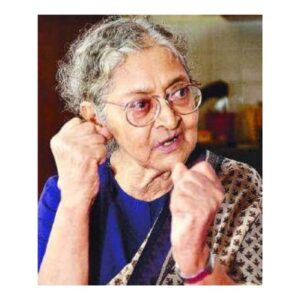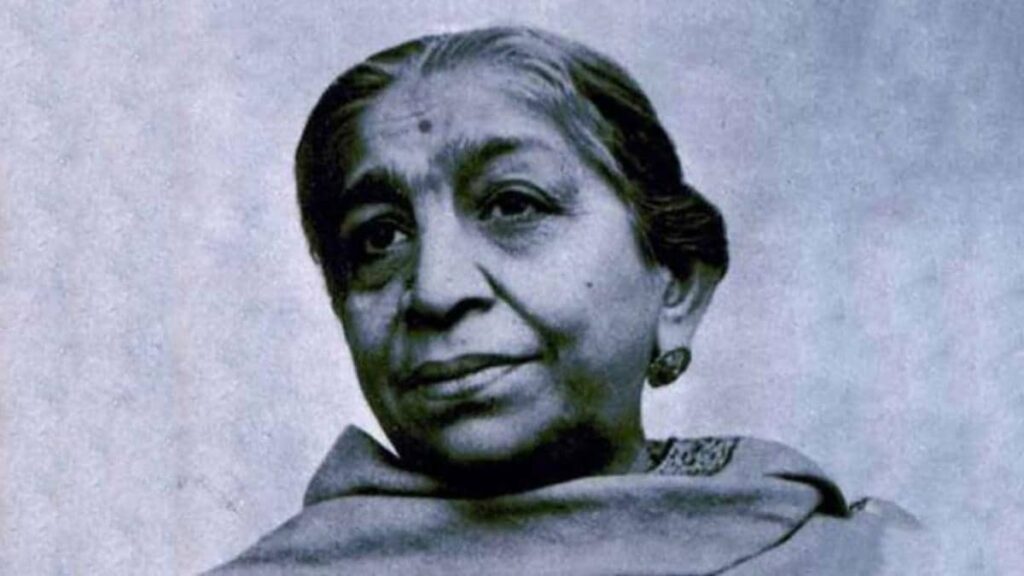First Female Governor of India
-by Abhrajita Mondal
–Reading Time – 8 min Approx
–Edited by – Srishti Bhattacharyya
Currently, there are twenty-eight state governors and eight union territory administrators. Each state and union territory has a governor. If you go through Articles 153 and 154 of the Constitution of India, you will find the definition of Governor. Article 154 provides the Governor with the powers that he or she can exercise over the state. Moreover, most of you might have read about the role of a governor in school. The powers of the governor are similar to that of the President of India in the Union. However, the real powers lie with the Chief Minister of the state.
Before you get to know about the first female governor of India, you should know about the powers they hold. The main function of the governor is to protect, preserve, and defend the constitution. Moreover, the governor has several executive, legislative, and discretionary powers, and the term of office is about five years.
First Female Governor of India:
Sarojini Naidu is the first female governor of India. She governed Uttar Pradesh from 15th August 1947 to 2nd March 1949. She is also known as the ‘Nightingale of India’ and had served as the first Indian woman President of the Indian National Congress.
She was born on 13th February 1879. More facts about Sarojini Naidu include that she used to write poetry and plays from a very young age. She also studied in England for some time and had published a biography of Muhammad Ali Jinnah, with the title The Ambassador of Hindu-Muslim Unity. Naidu was not only a poet, orator, freedom fighter, and administrator but also one of the first women to fight for the independence of India.
Throughout her life and career, Sarojini Naidu worked for the common men and fought hard to liberate women. Additionally, she set up many orphanages and schools for girls. She also fought for racial discrimination and communalism. She had four children, amongst which Padmaja Naidu walked in her footsteps. She became the Governor of West Bengal in 1961. She truly has a career to remember. Her contribution to the fight for India’s freedom is immense.
First Woman Governor of Tamil Nadu:
Fathima Beevi is the first woman governor of Tamil Nadu. She was born on 30th April 1927 in Pathanamthitta, Travancore. She was also a judge or the first female judge of the Supreme Court of India. Moreover, she is also the first Muslim woman to be appointed to the higher judiciary. After she retired from court, she served as a member of the National Human Rights Commission. She is most popular for her tenure as governor from 1997 to 2001.
Fathima Beevi did her schooling at the Town School and the Catholicate High School. She also completed her B.Sc. in Chemistry from University College, Thiruvananthapuram. Beevi enrolled as an advocate in 1950. She had also ranked in the Bar Council examination. She started her career at the lower judiciary level in Kerala. She held many ranks, positions, and titles during her prolific career.
Beevi was also the ‘Munsiff’ in Kerala Sub-ordinate Judicial services in May 1958. She was promoted as the Sub-ordinate Judge in 1968, as the Chief Judicial Magistrate in 1972, and as District and Sessions Judge in 1974. Beevi became the permanent judge of the High Court on 14th May 1984. Later, she retired as the Judge of the High Court on 29th April 1989. After some time, Beevi got promoted to be a judge of the Supreme Court on 6 October 1989 where she retired on 29th April 1992.
Beevi was also appointed as the Chancellor of Madras University and had served in the Kerala Commission for Backward Classes as a Chairman in 1993. She received the Doctorate of Letters and Mahila Shiromani Award in 1990, along with the Bharat Jyoti Award.
There is no dearth of women title holders. Let’s learn about some more of them.
First Woman CM Of India:
Sucheta Kriplani became the CM of Uttar Pradesh and the First Woman CM of India in 1963. Before marriage, she was called Sucheta Mazumdar. She was an Indian freedom fighter as well. Sucheta Kriplani was born into a Bengali Brahmo family in Ambala, Punjab. Her father was a medical officer and was transferred several times. Thus, she had the chance to attend various schools throughout the country. Later, she completed her Master’s in History from St. Stephen’s College, Delhi.
She was born a shy child. However, the situation of India at that time forced her to get into freedom fighting. As a 10-year-old, she heard the tale about Jallianwala Bagh Massacre from her father. It angered her and her siblings and thus resulted in growing vengeance among the Anglo-Indian kids in the community. In her book, ‘An Unfinished Autobiography’, she has mentioned many of her experiences.
Sucheta Kriplani studied at Indraprastha College. Later, she became a Professor of Constitutional History at Banaras Hindu University. She went on to marry J.B. Kripalani from the Indian National Congress. It is opposed by many, but ultimately no one could stop it. The Quit India Movement brought her to the forefront. Later, she was also arrested by the British. Moreover, she worked very closely with Mahatma Gandhi. She was elected from the Kanpur constituency as the First Woman CM of India. She founded the All India Mahila Congress, established in 1940.
Who Was India’s First Indian Woman Ambassador?
B. Muthamma was India’s first Woman Ambassador. She was born in Virajpet, Coorg. Chonira Belliappa Muthamma was also the first woman to clear the Indian Civil Services examinations. Moreover, she was also the first woman to join the IFS. That makes her India’s first IFS officer. She was the first Indian woman diplomat as well. Later on, she became the first Indian woman Ambassador also to Hungary. She owes a few salutes from all, as she beat other men to achieve the position. In an age when the women were prisoned at home and wore Burqas, C. B. Muthamma fought against gender bias.
She had lost her father, who was a forest officer, when she was just nine. Her mother raised her alone. She did her schooling at St. Josephs’ School. After which, she did her graduation Women’s Christian College in Chennai. Muthamma did her Master’s in English Literature from Presidency College. She is amongst the few women who have served in high positions, like Europe, Asia, and Africa. She never took injustice lying down. She even filed a petition in the Supreme Court when she thought that she was overlooked for promotion. She is India’s first Indian woman Ambassador, who was determined and honest. Her last position was in the Netherlands. She retired after serving for 32 years. Thus, she broke the glass ceiling in places where others failed.
The First Indian Female Physician:
Anandibai Joshi was the first Indian female physician. Additionally, she was also the first Indian woman to complete her medical studies in the US. She inspired other women to follow in her footsteps. She has many other firsts to her name. She was the first woman from the Bombay Presidency of India to study a two-year degree in Western medicine from a foreign country.
She was born as ‘Yamuna’. Later her husband Gopalrao Joshi gave her the name ‘Anandi’. She was born in a patriarchal family. Thus, she was married off at a very young age. She gave birth to her first child at fourteen. However, the child passed away after ten days, due to lack of medical care. She was deeply affected by the incident. Later, she decided to pursue medicine. Her husband was very supportive.
Many such women fought during India’s freedom fighting age. Sarojini Naidu is considered one of the strongest freedom fighters. The sacrifices of many such women have paid off in the long run. Such women have been an inspiration to women today. You can check out such names from the pages of history. Such women possessed a lot of grit and courage. A mention of India’s independence is complete without a mention of these women. You should research more about such women and show your gratitude to them.
-by Abhrajita Mondal
Dear Reader, Hope you liked the post. If you think our initiative “The Creative Post” is worth supporting, then please support us by paying the amount you think we are worthy of. We believe, the value of content should be decided by the consumer. Hence we request you to evaluate our worth and pay accordingly by Clicking Here.


